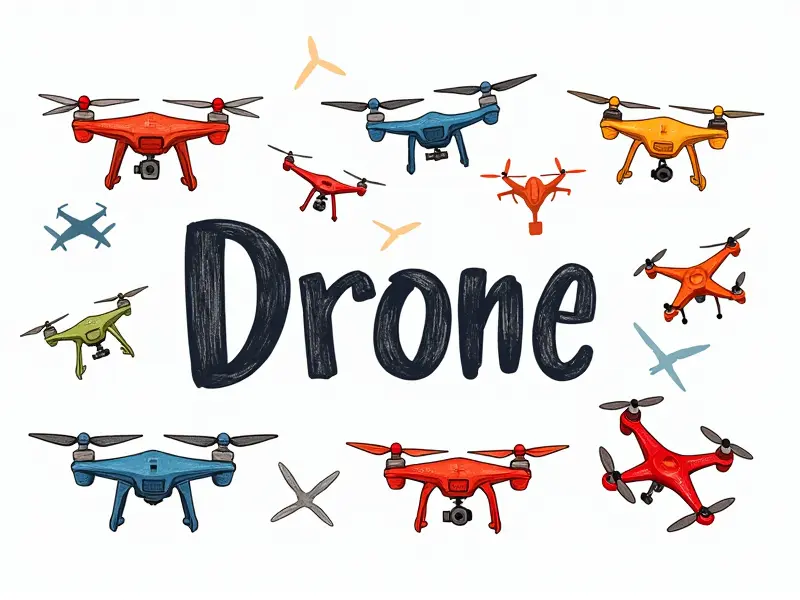Can drones fly without GPS?

Can Drones Navigate Without GPS?
Drones have become an indispensable tool in various industries, from agriculture to filmmaking. However, one of the most common questions asked by drone enthusiasts and professionals alike is whether drones can operate without relying on GPS signals. The answer lies in understanding how modern drones navigate and what alternatives are available when GPS is unavailable or unreliable.
No GPS, No Problem: Drone Flight Alternatives
While GPS has become the standard for drone navigation due to its accuracy and reliability, there are several alternative methods that allow drones to fly without relying on satellite signals. These include visual odometry, inertial measurement units (IMUs), and dead reckoning techniques.
Visual Odometry
Visual odometry is a technique where the drone uses onboard cameras to track its movement by analyzing changes in the environment around it. By processing images from multiple angles, drones can calculate their position relative to fixed points and maintain stable flight.
Inertial Measurement Units (IMUs)
IMUs are sensors that measure acceleration and rotation rates. Combined with other data such as barometric pressure, IMUs enable drones to estimate their altitude and orientation accurately without GPS assistance.
How Do Drones Fly Without GPS?
Drones can fly without GPS by utilizing a combination of onboard sensors and advanced algorithms that process real-time data from multiple sources. This approach allows for autonomous navigation in environments where satellite signals are weak or non-existent.
Sensor Fusion
sensor fusion involves combining data from various sensors to create a more accurate picture of the drone's position and orientation. By integrating GPS, IMUs, barometers, and cameras, drones can maintain stability and navigate effectively even in challenging conditions.
Drone Navigation Beyond GPS: Techniques Explained
The ability for drones to operate without GPS opens up new possibilities for their use in remote or indoor settings. Here are some key techniques that enable this:
- Lidar and Sonar Sensors: These sensors provide precise distance measurements, allowing drones to avoid obstacles and map out environments accurately.
- Magnetic Field Detection: Some advanced drones use magnetic field detection to orient themselves relative to the Earth's magnetic poles, providing an alternative reference point for navigation.
Flying FPV Drones Without GPS
Fly-by-wire (FPV) drones are popular among hobbyists and professionals who enjoy first-person view racing. These drones often rely on visual odometry and IMUs to navigate, making them highly capable of flying without GPS.
Visual Feedback Loops
Visual feedback loops in FPV drones use real-time video feeds from onboard cameras to help pilots maintain control over their drones. This method is particularly effective for indoor or urban environments where GPS signals are weak.
Autonomous Drone Flight Without GPS: Reality Check
The reality of flying autonomous drones without GPS is becoming increasingly feasible thanks to advancements in sensor technology and AI algorithms. However, there are still challenges to overcome:
- Battery Life: Extended flight times can be a challenge for battery-powered drones operating in GPS-denied areas.
- Data Processing: Real-time data processing requires powerful onboard computers that may add weight and complexity to the drone design.
GPS-Free Drone Operations Explained
Operating drones without GPS involves a range of strategies, from using alternative navigation systems to optimizing flight paths for maximum efficiency. Here’s how it works:
Optimized Flight Paths
Flight path optimization algorithms can be used to plan routes that minimize the need for GPS signals while maximizing drone performance.
Can FPV Racing Drones Fly Without GPS?
FPV racing drones are designed with high maneuverability and speed in mind, making them well-suited for flying without GPS. By relying on visual odometry and IMUs, these drones can navigate complex environments at high speeds.
High-Speed Navigation
High-speed navigation is enabled by advanced image processing techniques that allow FPV racing drones to react quickly to changes in their environment.
How RC Quadcopters Navigate in GPS-Less Areas
Remote-controlled (RC) quadcopters can navigate effectively without GPS using a combination of visual and inertial sensors. This makes them ideal for indoor or outdoor settings where satellite signals are unreliable.
Indoor Navigation
Indoor navigation is particularly challenging due to the lack of external reference points, but RC quadcopters equipped with advanced sensors can overcome these obstacles.
Off-Roading with GPS-Less Drones
Drones designed for off-road use often incorporate robust sensor systems that allow them to operate in rugged terrain where GPS signals are weak or non-existent. These drones excel in applications such as search and rescue, agriculture, and construction.
Rugged Terrain Navigation
Rugged terrain navigation is achieved through the use of specialized sensors like Lidar and sonar that provide accurate distance measurements and obstacle avoidance capabilities.
Flying Drones When GPS Is Down
In situations where GPS signals are unavailable, drones can still perform critical tasks by relying on alternative navigation methods. This capability ensures continuity in operations even during unexpected disruptions.
Disaster Response
Disaster response scenarios often involve degraded or non-existent GPS coverage. Drones equipped with advanced sensor systems and autonomous flight capabilities can play a crucial role in these situations.
Conclusion
The ability of drones to fly without GPS is an exciting development that opens up new possibilities for their use across various industries. By leveraging alternative navigation techniques such as visual odometry, IMUs, and sensor fusion, drones can maintain stability and navigate effectively even in challenging environments. As technology continues to advance, we can expect to see more sophisticated solutions that enhance the reliability and versatility of GPS-free drone operations.

